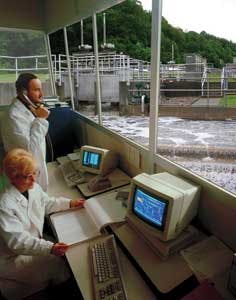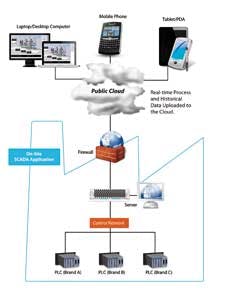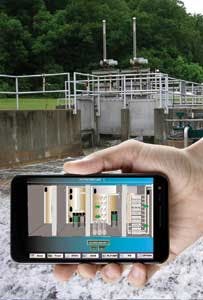There are basically three types of cloud computing services offered in today's market: Infrastructure as a Service (IaaS), Platform as a Service (PaaS), and Software as a Service (SaaS). Most integrators and OEMs providing cloud-based SCADA services to the water and wastewater industry use the IaaS model.
In the IaaS model, integrators and OEMs deploy and run off-the-shelf software just as they would on their own IT infrastructure. End users only pay for the capacity used and can add capacity online as necessary. The integrators and OEMs don't manage or control the underlying cloud infrastructure—but they maintain control over operating systems, storage, and deployed applications—in addition to selecting networking components, such as host firewalls.
Advantages
Cloud-based SCADA has been shown to dramatically lower the costs associated with a traditional SCADA system. By migrating to the cloud, the costs associated with replacing outdated hardware, such as PCs running Windows 95, disappear because the application runs in a virtual environment. The cloud provider updates hardware, and the process is invisible to the user.
The associated hardware costs can also be paid monthly instead of one large upfront cost. Users pay for increasing data storage when they need it. For example, they no longer need to purchase a large server with a $30,000 SQL server license in order to accommodate data storage use for the next 10 years. They can instead expand data storage incrementally, without having to purchase additional hardware and software.
A typical new in-house SCADA system for a small water treatment facility can have an upfront capital cost of about $11,500 for software, computer, telemetry, programming and setup. Compared to the initial approximate $1,600 cost of getting started with a cloud-based SCADA system, users can achieve about 90 percent reduction in costs.
The use of a pre-existing cloud infrastructure typically enables deployment and upgrades in days rather than the months. Computing resources can be quickly added as additional SCADA projects come online, or just as easily dropped if the solution doesn't fit or work. The prohibitive cost of hardware and changing hardware platforms is eliminated, no longer locking users into a particular solution.
Many water and wastewater SCADA applications rely on remote monitoring of critical equipment and processes through web browsers, smart phones, and other mobile devices. Using a self-hosted solution with access provided by a single ISP can prove problematic if the service provider experiences an outage. Cloud computing provides multiple redundant Internet connections, providing greater reliability and doing so in a cost-efficient manner.
Cloud-based SCADA also can improve the system's reliability. Using a cloud computing platform enables water and wastewater utilities to employ redundancy and disaster recovery capabilities far beyond that found in the typical water and wastewater IT departments.
Cloud providers use the most advanced data centers and take great measures to ensure system uptime. They also typically have data centers at diverse geographical locations to provide continuous service in the event of a power outage or natural disaster at one site. This also eliminates the need for utilities to maintain redundant servers and software for backup.
Since water and wastewater projects often rely on remote access and monitoring by maintenance personnel, great lengths must be taken by the utilities to ensure their security systems are robust. Many emerging IT security concerns are new territory for control engineers typically tasked with developing SCADA Projects.
Cloud providers typically have dedicated personnel that specialize in security, staying abreast of emerging threats and constantly auditing and patching security measures. These patches are instantly updated to users without any user action required to make sure utilities have the latest security provisions.
Considerations
As with any information-based technology, new or mature, there are security concerns. Moving sensitive data into the cloud involves questions about securing data that must be addressed. Cloud-based SCADA providers must assure security mechanisms are used for logical separation among different applications and customers. Users must find out how data will be controlled and secured, and be comfortable with the cloud provider's methodology.
A software or configuration mistake could allow other subscribers to gain access to organizational data and resources. By manipulating vulnerabilities from within the cloud environment, attackers could impersonate subscribers to obtain unauthorized access to data. There have been a few instances of botnets launching a denial of service attack against the infrastructure of a cloud provider.





